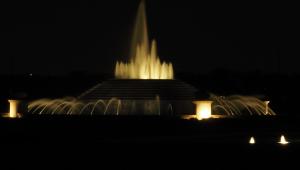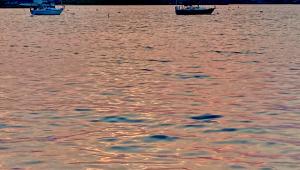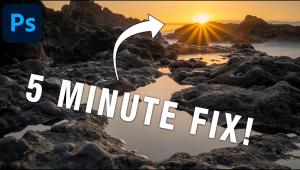Digital Help
Q&A For Digital Photography
Digital Help is designed to aid you in getting the most from your digital photography, printing, scanning, and image creation. Each month, David Brooks provides solutions to problems you might encounter with matters such as color calibration and management, digital printer and scanner settings, and working with digital photographic images with many different kinds of cameras and software. All questions sent to him will be answered with the most appropriate information he can access and provide. However, not all questions and answers will appear in this department. Readers can send questions to David Brooks addressed to Shutterbug magazine, through the Shutterbug website (www.shutterbug.com), directly via e-mail to: editorial@shutterbug.com or goofotografx@gmail.com or by US Mail to: David Brooks, PO Box 2830, Lompoc, CA 93438.
Pushing The Limits Of Optical Quality
Q. I read your column and learn some great information and you seem to have
a great knowledge of digital cameras. I have tried to contact several sources
in regard to this question and have received diddly. I have a Samsung Pro815
which I like, but I need more juice. It has an equivalent of 420mm flat out
at maximum. But, I need some more millimeters.
I thought about a doubler gizmo, like a 2x tele lens. It has a 72mm thread (I
think). I was wondering if you knew where I could find something to hang onto
this Samsung. I would want the autofocus to work. Would you foresee vignetting
at some zoom ranges?
Don
A. Trying to extend the effective focal length beyond the
effective 420mm 35mm equivalent by using an add-on auxiliary lens would very
likely result in a degradation of image quality. Part of the reason is the optical
effect of adding on more, and questionable quality elements. Also, doubling
of an already long telephoto effect would add to image deterioration due to
camera movement and the natural effect of photographing a subject at very great
distances. It would be like putting an 800mm plus lens on a full-frame camera,
which would be a real challenge even if the optics were top grade.
A somewhat similar but possibly better solution might be a tele-extender that
fits between your lens and the camera body. I would suggest querying Adorama
and B&H to see if there is a 2x tele-extender that has the same lens mount
as your camera. If you can borrow or try out an auxiliary lens or tele-extender
without committing to buying it, give it a go and see if what you get in photo
results is worthwhile.
Lightroom Or Photoshop, Maybe Both?
Q. I'm planning to upgrade my Photoshop from CS to CS3. I recently had
1GB of RAM installed in my computer. I've been using Photoshop "Browser"
to view my images and assign keywords to them and create PDF documents from
them, etc. I understand that when CS2 was released "Browser" was
replaced with "Bridge" and I understand that "Bridge"
is still included in CS3, so I'm a little confused as to what "Lightbox"
offers that I can't do with "Bridge." In your opinion, do
you think "Lightbox" is a worthwhile purchase? It seems a little
pricey just to be an image organizer.
Randy
A. The "Browser" in CS is now called Bridge in
CS3. For users of the other CS3 applications, Bridge is common to all plus supports
some file-editing processes without opening the images in the application. You
will be able to do just about everything with Bridge you were able to do with
the browser.
I assume by "Lightbox" you are referring to the new intermediate
Adobe application called Lightroom. It is intended for professional photographers
who shoot large numbers of exposures in raw format with D-SLR cameras. It supports
organizational tasks and a quite powerful database system for ratings, renaming,
and keyword functions, all of which are quite sophisticated and robust. Lightroom
also includes a Developer module that supports very refined image adjustment
by means of nondestructive editing. In addition, you can print directly from
Lightroom, but most of the editing functions available in the full version of
Photoshop are not available. But you can export the image with modifications
directly to Photoshop running on the same computer, or export the Lightroom
file saved as a .PSD or .TIF file.
Considering what you have described as to how you work and what you do with
your image files, I would assume Lightroom would probably be of little advantage
or interest. It is mainly designed to support assignment photographers who shoot
a large volume of exposures of commercial subjects and output a small percentage
of essentially "straight" photographic images for use in publications.
Expecting Too Much?
Q. I own a Nikon D200 and my question concerns what seems to be a haze over
some of my images. If I use Smart Fix in Photoshop it corrects most frames.
If you can explain the haze on my original file I would appreciate it. (Editor's
Note: Photo was attached, not reproduced here.)
Roger W. Barnard
A. The problem is not "haze" but the result of
a low subject brightness range and likely a little underexposure (possibly your
electronic flash was not fully recharged). The image looks dull and "hazy"
because the image file contains a lot of file space that has no image information;
the gamut or range of values of the image is smaller than the file space. This
would be obvious if the image file was opened in an image editor like Photoshop
and you opened the Histogram window. The graph would indicate the image information
somewhere in the middle with no image information on each side.
The "haze" problem can be avoided, and you can obtain improved image
quality, by increasing the lighting contrast and setting the exposure level
more accurately. If this dull picture is, as I suspect, the result of partial
flash power output, wait longer between exposures so the flash unit can fully
recharge.
Another recommendation is to learn how to color correct image files manually
instead of using an automated setup like Smart Fix. Automated software adjustment
is very limited because the application is blind to what you see displayed on
screen, and does not know what the subject should look like--it just reads
number values and if they vary from a "typical" subject Smart Fix
rarely, if ever, delivers optimal image quality.
Invest a little effort in learning how the manual tools in an image editor work
so you can expertly color correct camera files. It will pay off in better pictures
and more satisfaction with your photography.
Converting Digital Photo Files To A "Kodachrome" Film Look
Q. I am always interested in creating images that look like certain film stock
of days gone by, especially Kodachrome. I know of one software program, Exposure
2, that does this, but it is very expensive and includes many simulations that
I will likely never use. Do you know of other software programs out there that
offer some of its features for much less money?
Wayne LaMothe
A. The capability of outputting with a Kodachrome look would
probably be in the form of a Photoshop plug-in, so may I suggest going to the
Adobe website (www.adobe.com) where they list most of the third-party plug-ins
that are available? Sorry, I have not explored all of the plug-ins myself but
Joe Farace, in reviews and his Digital Innovations column, covers this beat
well.
I would think that this kind of conversion could be done with a color management
profile, and although Kodak had such profiles years ago, I would not know if
they would even function if available today. Some of the better known plug-in
software publishers you might also explore are ACD Systems, Extensis, XPress
Digital, Nik Software, Alien Skin, onOne Software, Tribeca Imaging, and Auto
FX Software. Researching their websites might turn up something. Another research
tool is: http://versiontracker.com.
Sorry I cannot be more helpful. But maybe there is a Shutterbug reader who knows
of something and will get in touch. If so, I'll put a follow-up in this
column.
ANNOUNCEMENT
I am pleased to announce a new Third Edition adding five chapters to my eBook
DIGITAL DARKROOM RESOURCE CD. The CD now contains 26 chapters totaling 318 pages
in Adobe Acrobat .PDF format, providing easy-to-read text and large high-quality
illustration. The CD is available for $20 plus $4 shipping and handling (US
Mail if available). Ordering is as simple as sending a check or money order
for $24 made out to me, David B. Brooks, and mailed to PO Box 2830, Lompoc,
CA 93438.


































